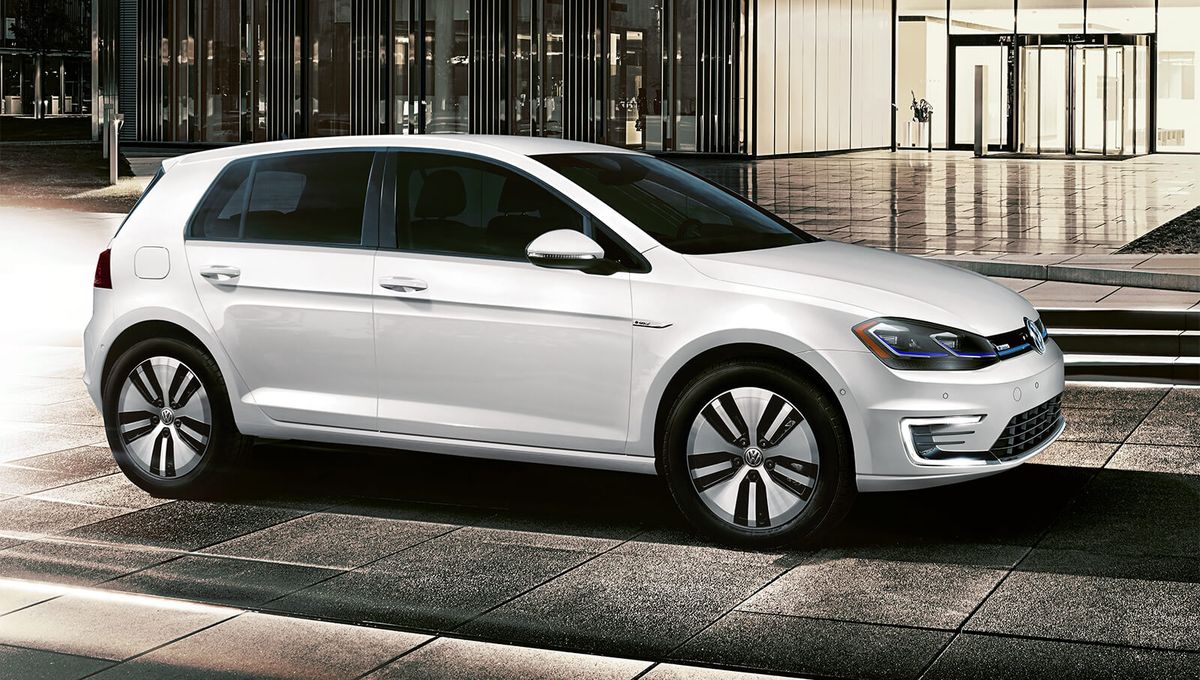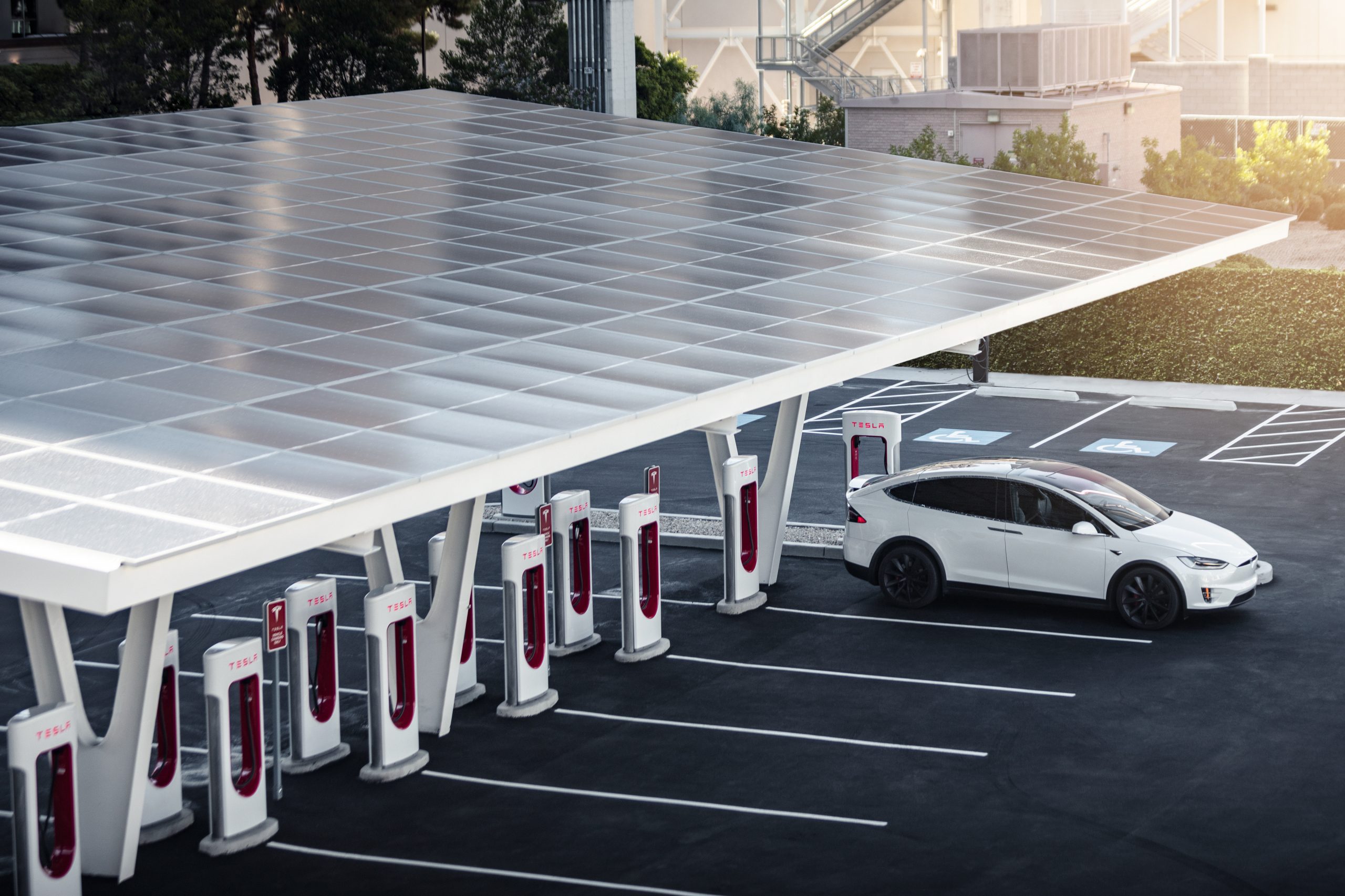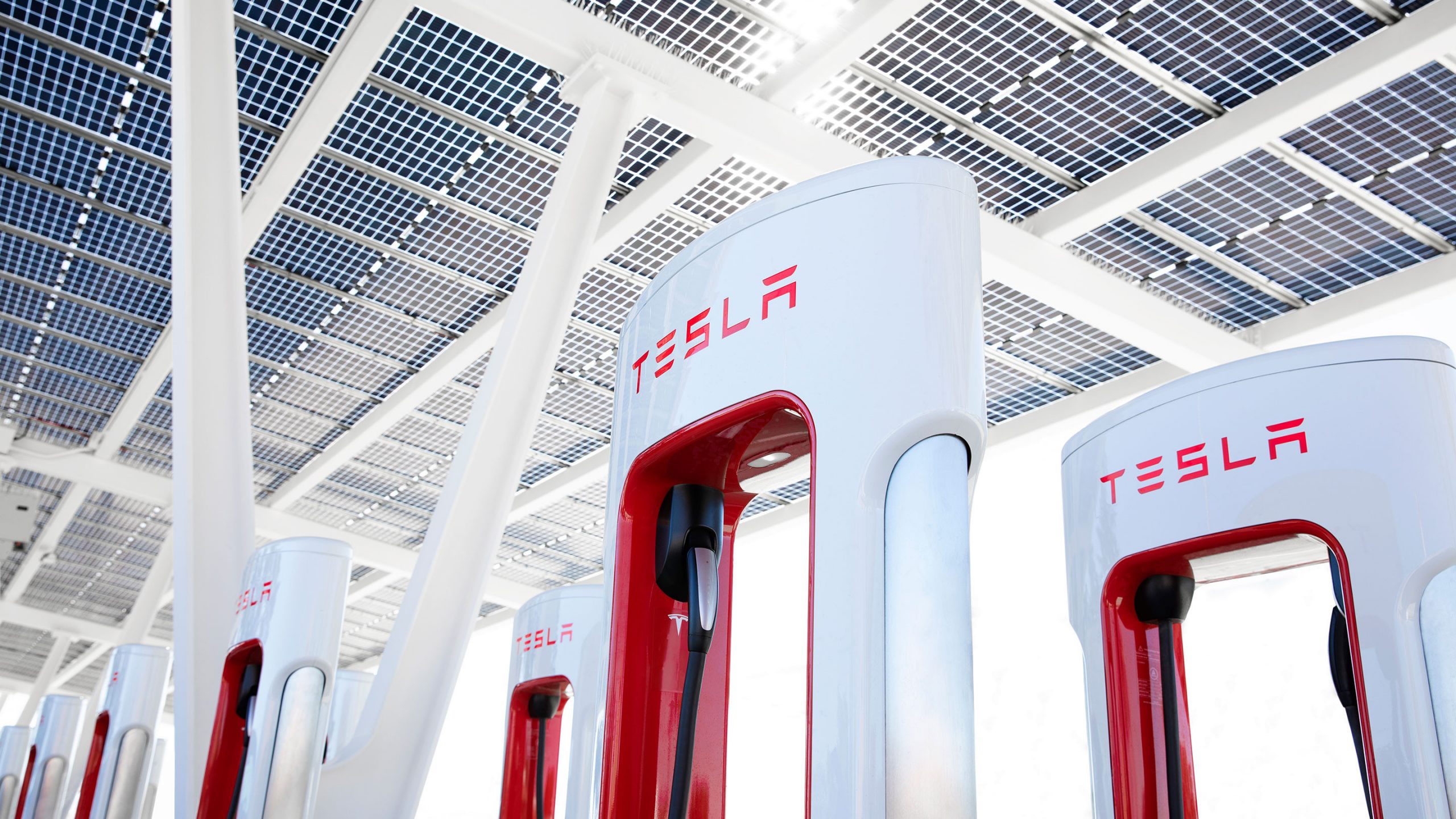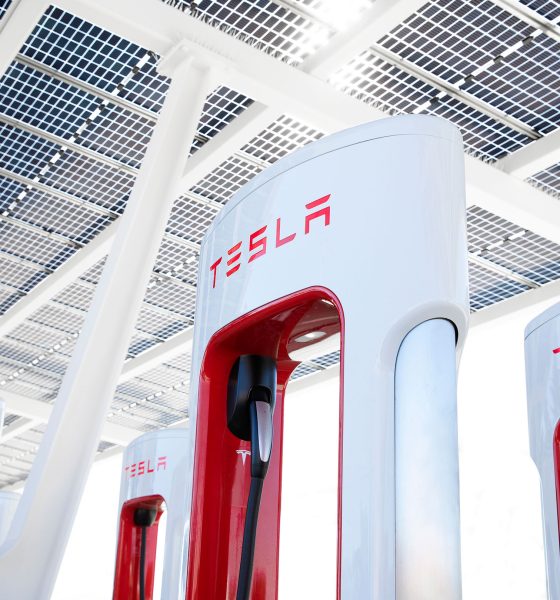For years, Tesla has been the subject of various statements by rival automakers that claim their company is superior. Electric vehicle tech, charging infrastructure, range, and performance have been where these companies have argued they are stronger and more robust a competitor than Tesla in the space.
Now, those same competitors are essentially admitting that without Tesla, they cannot succeed, and it has culminated in the war for EV charging ending before it has really even begun.
Perhaps the most significant and most important variable in the growth of electric vehicles is charging. We can argue that range is not because, for years, people have driven electric vehicles like Volkswagen’s eGolf and the Nissan Leaf, which offer low range ratings of just 125 and 150 miles, respectively.
Credit: Volkswagen
We can argue that performance is not because not everyone needs or even wants speed and acceleration. While tech is important, it is not a necessity for all drivers, as some continue to drive vehicles with tape decks and no power windows.
Everyone who drives an EV needs a place to charge. While home charging solutions are suitable for everyone, that does not solve the issue that lies behind a long commute or road trip. People need adequate charging infrastructure to make driving an EV suitable for things past a car being a daily driver. Unfortunately, while it is the most important, at least in my opinion, it has not been the variable that automakers have focused on exclusively.
Instead, automakers have boasted world-class 0-60 MPH acceleration times, range ratings that, while incredibly high, do not necessarily offer any advantages to the driver, and a look or design that is sure to be the next “Tesla killer.” Those are all great metrics to have and hold, but where it really matters is where these companies have fallen short.
But as the old saying goes: if you can’t beat them, join them.
Ford was the first major automaker to readily admit that, without Tesla’s industry-leading charging infrastructure, its plans for EV prowess would likely come to a screeching halt. They, along with everyone else who is mentioned, will not only adopt NACS but will also gain access to 12,000 Supercharger locations. General Motors, which has garnered more attention from the Biden Administration than Tesla for its “leading” EV efforts, was next.
(Credit: Tesla)
The latter was an unlikely partnership that many likely did not think was coming but to succeed in this business, one where the leader is overwhelmingly obvious and so far ahead of the others, relationships must be leveraged, and vendettas must be set aside. Companies can say they’re better than Tesla in EVs, but those who have followed the sector for any length of time must know it was all rhetoric.
But, the thesis of this is not to hound the fact that companies had to swallow their pride. It is about Tesla winning the battle of EV charging.
After Volvo vowed to make the switch to Tesla’s NACS connector in 2025 yesterday, and with plenty of others mulling over the advantages, it is clear that companies are interested in making Tesla’s strategy the U.S. standard. Even agencies like the SAE are taking expedited measures to ensure the NACS connector gains that recognition.
Charging companies are on board as well, and it is overwhelmingly clear that when it comes to adopting EVs and their strategies or accessories, Tesla is who the others are aiming to be like.
The battle for EV charging prowess has not even begun. But it has already ended, and it is better this way. If Ford, GM, Volkswagen, and others operated their own gas stations for the past century, cars would have been entirely too competitive and would have never moved forward. It is time for differences to be set aside and for the leader to lead, and Tesla is finally getting its chance.
I’d love to hear from you! If you have any comments, concerns, or questions, please email me at joey@teslarati.com. You can also reach me on Twitter @KlenderJoey, or if you have news tips, you can email us at tips@teslarati.com.

News
Tesla FSD fleet is nearing 7 billion total miles, including 2.5 billion city miles
As can be seen on Tesla’s official FSD webpage, vehicles equipped with the system have now navigated over 6.99 billion miles.

Tesla’s Full Self-Driving (Supervised) fleet is closing in on almost 7 billion total miles driven, as per data posted by the company on its official FSD webpage.
These figures hint at the massive scale of data fueling Tesla’s rapid FSD improvements, which have been quite notable as of late.
FSD mileage milestones
As can be seen on Tesla’s official FSD webpage, vehicles equipped with the system have now navigated over 6.99 billion miles. Tesla owner and avid FSD tester Whole Mars Catalog also shared a screenshot indicating that from the nearly 7 billion miles traveled by the FSD fleet, more than 2.5 billion miles were driven inside cities.
City miles are particularly valuable for complex urban scenarios like unprotected turns, pedestrian interactions, and traffic lights. This is also the difference-maker for FSD, as only complex solutions, such as Waymo’s self-driving taxis, operate similarly on inner-city streets. And even then, incidents such as the San Francisco blackouts have proven challenging for sensor-rich vehicles like Waymos.
Tesla’s data edge
Tesla has a number of advantages in the autonomous vehicle sector, one of which is the size of its fleet and the number of vehicles training FSD on real-world roads. Tesla’s nearly 7 billion FSD miles then allow the company to roll out updates that make its vehicles behave like they are being driven by experienced drivers, even if they are operating on their own.
So notable are Tesla’s improvements to FSD that NVIDIA Director of Robotics Jim Fan, after experiencing FSD v14, noted that the system is the first AI that passes what he described as a “Physical Turing Test.”
“Despite knowing exactly how robot learning works, I still find it magical watching the steering wheel turn by itself. First it feels surreal, next it becomes routine. Then, like the smartphone, taking it away actively hurts. This is how humanity gets rewired and glued to god-like technologies,” Fan wrote in a post on X.
News
Tesla starts showing how FSD will change lives in Europe
Local officials tested the system on narrow country roads and were impressed by FSD’s smooth, human-like driving, with some calling the service a game-changer for everyday life in areas that are far from urban centers.

Tesla has launched Europe’s first public shuttle service using Full Self-Driving (Supervised) in the rural Eifelkreis Bitburg-Prüm region of Germany, demonstrating how the technology can restore independence and mobility for people who struggle with limited transport options.
Local officials tested the system on narrow country roads and were impressed by FSD’s smooth, human-like driving, with some calling the service a game-changer for everyday life in areas that are far from urban centers.
Officials see real impact on rural residents
Arzfeld Mayor Johannes Kuhl and District Administrator Andreas Kruppert personally tested the Tesla shuttle service. This allowed them to see just how well FSD navigated winding lanes and rural roads confidently. Kruppert said, “Autonomous driving sounds like science fiction to many, but we simply see here that it works totally well in rural regions too.” Kuhl, for his part, also noted that FSD “feels like a very experienced driver.”
The pilot complements the area’s “Citizen Bus” program, which provides on-demand rides for elderly residents who can no longer drive themselves. Tesla Europe shared a video of a demonstration of the service, highlighting how FSD gives people their freedom back, even in places where public transport is not as prevalent.
What the Ministry for Economic Affairs and Transport says
Rhineland-Palatinate’s Minister Daniela Schmitt supported the project, praising the collaboration that made this “first of its kind in Europe” possible. As per the ministry, the rural rollout for the service shows FSD’s potential beyond major cities, and it delivers tangible benefits like grocery runs, doctor visits, and social connections for isolated residents.
“Reliable and flexible mobility is especially vital in rural areas. With the launch of a shuttle service using self-driving vehicles (FSD supervised) by Tesla in the Eifelkreis Bitburg-Prüm, an innovative pilot project is now getting underway that complements local community bus services. It is the first project of its kind in Europe.
“The result is a real gain for rural mobility: greater accessibility, more flexibility and tangible benefits for everyday life. A strong signal for innovation, cooperation and future-oriented mobility beyond urban centers,” the ministry wrote in a LinkedIn post.
News
Tesla China quietly posts Robotaxi-related job listing
Tesla China is currently seeking a Low Voltage Electrical Engineer to work on circuit board design for the company’s autonomous vehicles.

Tesla has posted a new job listing in Shanghai explicitly tied to its Robotaxi program, fueling speculation that the company is preparing to launch its dedicated autonomous ride-hailing service in China.
As noted in the listing, Tesla China is currently seeking a Low Voltage Electrical Engineer to work on circuit board design for the company’s autonomous vehicles.
Robotaxi-specific role
The listing, which was shared on social media platform X by industry watcher @tslaming, suggested that Tesla China is looking to fill the role urgently. The job listing itself specifically mentions that the person hired for the role will be working on the Low Voltage Hardware team, which would design the circuit boards that would serve as the nervous system of the Robotaxi.
Key tasks for the role, as indicated in the job listing, include collaboration with PCB layout, firmware, mechanical, program management, and validation teams, among other responsibilities. The role is based in Shanghai.
China Robotaxi launch
China represents a massive potential market for robotaxis, with its dense urban centers and supportive policies in select cities. Tesla has limited permission to roll out FSD in the country, though despite this, its vehicles have been hailed as among the best in the market when it comes to autonomous features. So far, at least, it appears that China supports Tesla’s FSD and Robotaxi rollout.
This was hinted at in November, when Tesla brought the Cybercab to the 8th China International Import Expo (CIIE) in Shanghai, marking the first time that the autonomous two-seater was brought to the Asia-Pacific region. The vehicle, despite not having a release date in China, received a significant amount of interest among the event’s attendees.










